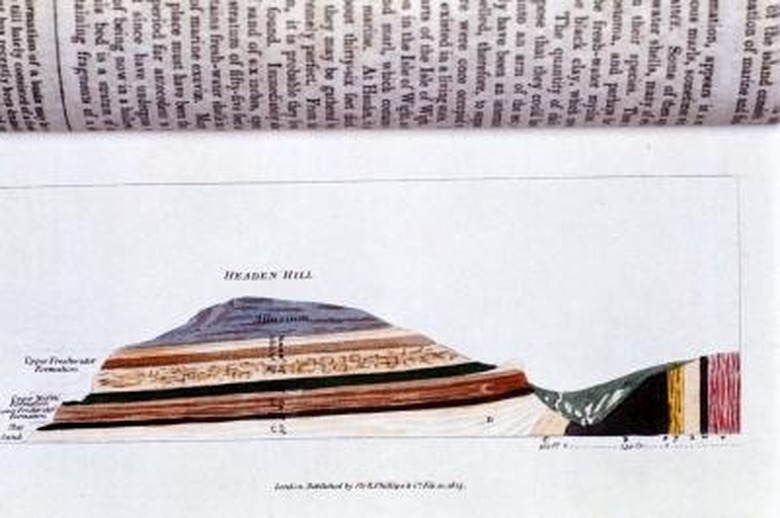What Are The Steps Of The Rock Cycle?
The rock cycle is the ongoing process of the continually changing states of earth minerals. Much like the water cycle, which consists of the way water changes to become steam, clouds, rain, then collects into bodies of water again, the rock cycle explains the way the minerals in the earth change. Once the rock cycle is understood, geological patterns and phenomena such as mountains, volcanoes and stream beds can be better understood and studied.
1. Rocks
It's hard to determine which step in the rock cycle is the first, since the cycle is an ongoing process that virtually never ends. However, for the purposes of explaining the cycle, we'll start with what we see all around us on a daily basis: rocks. As time goes by, rocks are worn down by wind, rain, rivers, streams, freezing and thawing ice and other forces of nature. Rocks can break up and even slowly turn into small particles like sand that are collectively called sediment.
2. Sediment
Sediments are blown all over by the wind and carried by streams. Many particles end up at the bottom of riverbeds where they are compacted and eventually become what is known as sedimentary rock. Sandstone is a type of sedimentary rock. When the earth's tectonic plates shift, these rocks can be pulled underneath the ground where it is extremely warm.
3. Magma
When rocks are pushed deep enough under the earth's surface, the heat can literally melt them, and magma is created. When magma comes out of the ground, it is known as lava, but not all magma makes it above ground. Some magma is pushed upward where it is slightly cooler, and since different minerals take different amounts of time to cool, the minerals in the magma separate and rocks such as granite are formed underground. These rocks eventually make their way to the surface through movements in the earth's plates. Other rocks are made when lava comes forth from a volcano. This way, the lava cools much more quickly, not giving the minerals time to separate. This process usually forms lava rocks and other such stones.
4. Rocks...Again!
Now the rocks have found their way back to Step 1, where they will once again become sediment, sedimentary rocks, magma, and then rocks again.
Cite This Article
MLA
Eves, Dustin. "What Are The Steps Of The Rock Cycle?" sciencing.com, https://www.sciencing.com/steps-rock-cycle-5484470/. 24 April 2017.
APA
Eves, Dustin. (2017, April 24). What Are The Steps Of The Rock Cycle?. sciencing.com. Retrieved from https://www.sciencing.com/steps-rock-cycle-5484470/
Chicago
Eves, Dustin. What Are The Steps Of The Rock Cycle? last modified March 24, 2022. https://www.sciencing.com/steps-rock-cycle-5484470/
